Add and Configure Primary Widgets
You can add Primary and Custom Widgets to your Custom Dashboards. The Harness Primary Widget Library gets you started by offering the predefined visualizations of popular DevOps metrics.
Before You Begin
- Custom Dashboards
- Primary Widgets
- Custom Widgets
- Filters, Groups, and Tags in Primary and Custom Widgets
Limitations
- Data available in graphs limited to 50 Environments: When you use Group By in your Widget and select Environment, Harness limits the data available to the graph to 50 Environments. You can apply filters on Environments and split the data into multiple reports to view the results.
Step: Add Primary Widgets
To add Primary Widgets, perform the following steps:
Click Add Widget at the dashboard's upper right corner to populate or expand a Custom Dashboard.
Select Primary Widgets.
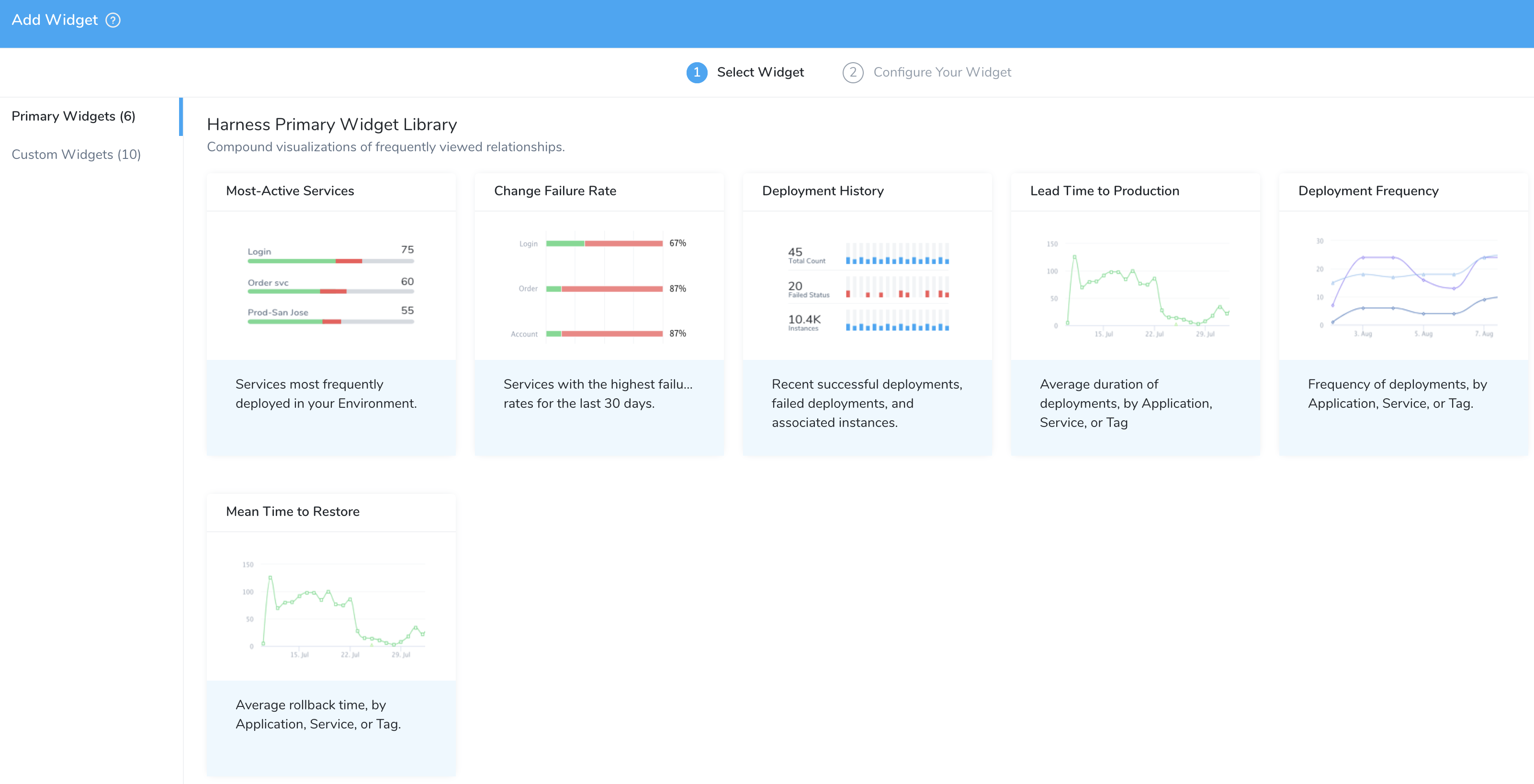
In Select Widget, select a visualization from the Harness Primary Widget Library.
The Widget and visualization that you select detemine the specific configuration fields, options, and previews available in the Add/Edit Widget wizard.
Option 1: Configure Most-Active Services
For this Widget, Harness Services are the only entity available for measurement and Applications are the only available filters.
In Configure Your Widget, in Widget Title, enter a title for your widget.

The preview pane on the right indicates the data that your Widget will retrieve. It also displays warnings about missing data, with a reminder about possible causes. You can click this pane's Update button to refresh the data after each configuration change.
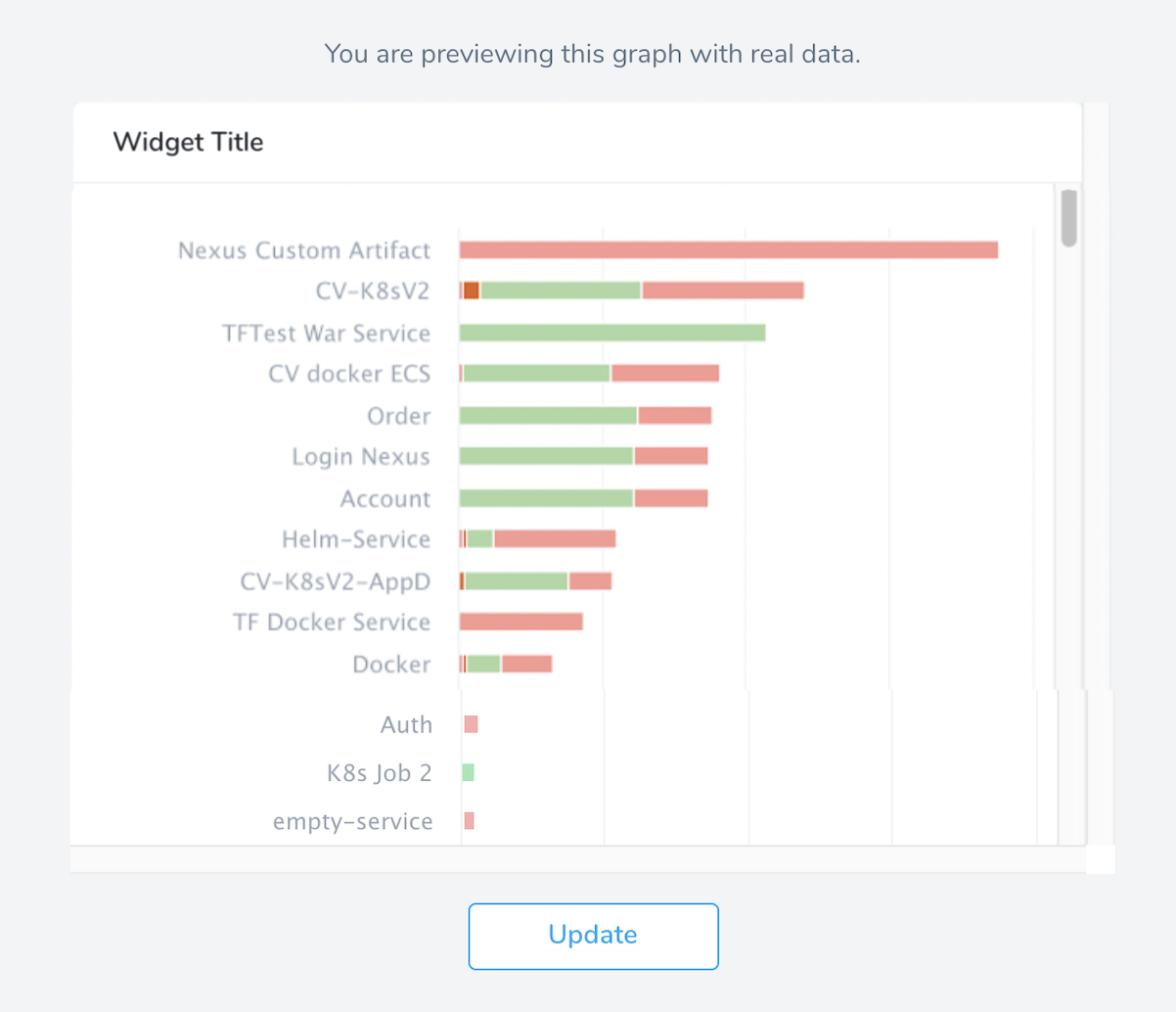
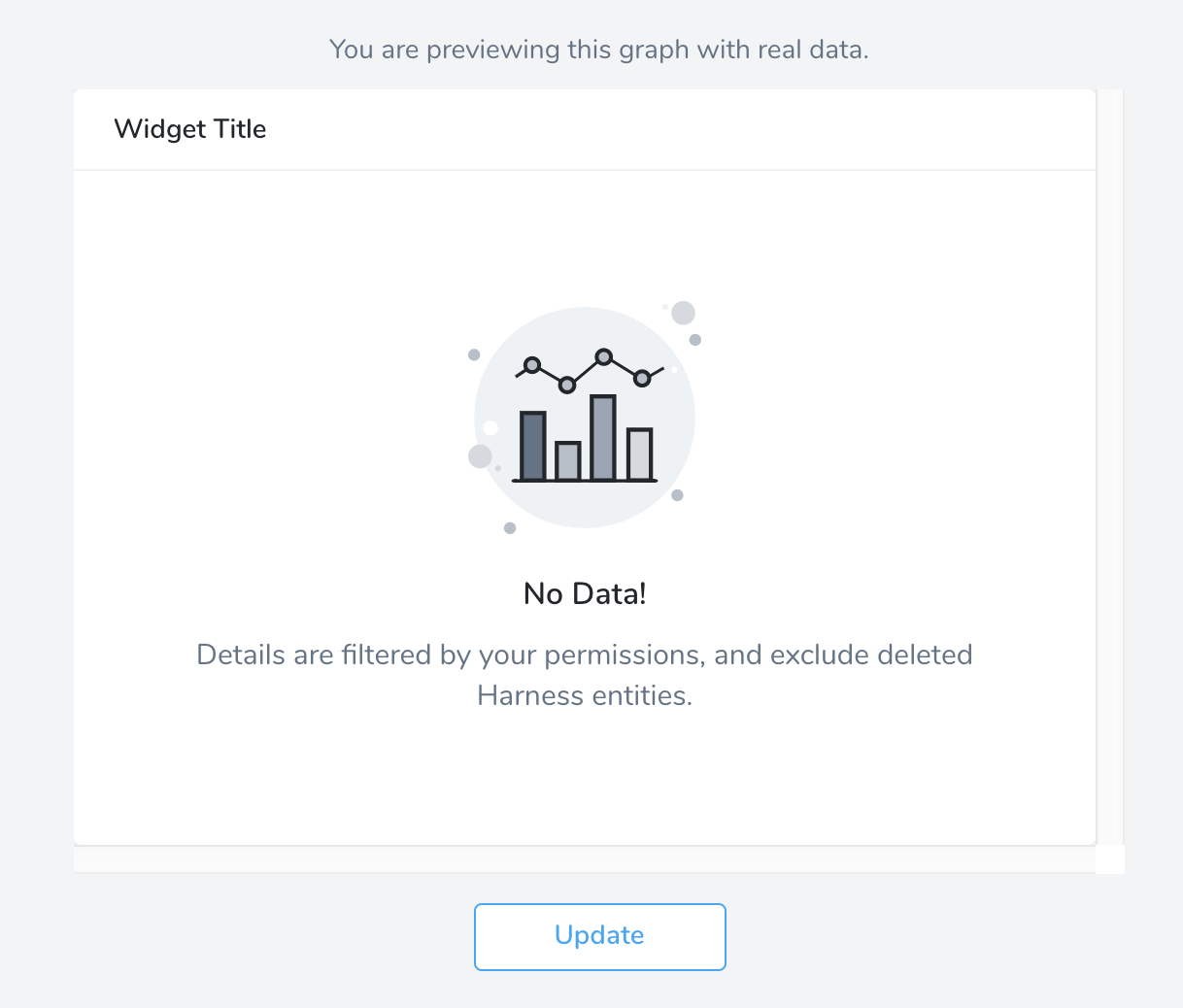
In Filter Most-Active Services Data, click Add Data Filter. For more information on filters, see Filters, Groups, and Tags.

In Filter Type, select Application.
In Select Filter Values, select value for your filter type from the drop-down list.
In Define Data Refresh Interval, select the interval. The default value of Define Data Refresh Interval is Never.

Once you have configured the Widget, click Create Widget.
Option 2: Configure Change Failure Rate
For this Widget, Harness Services are the only entity available for measurement. You can filter on Applications, Environments, and Service Tags.
In Configure Your Widget, in Widget Title, enter a title for your widget.
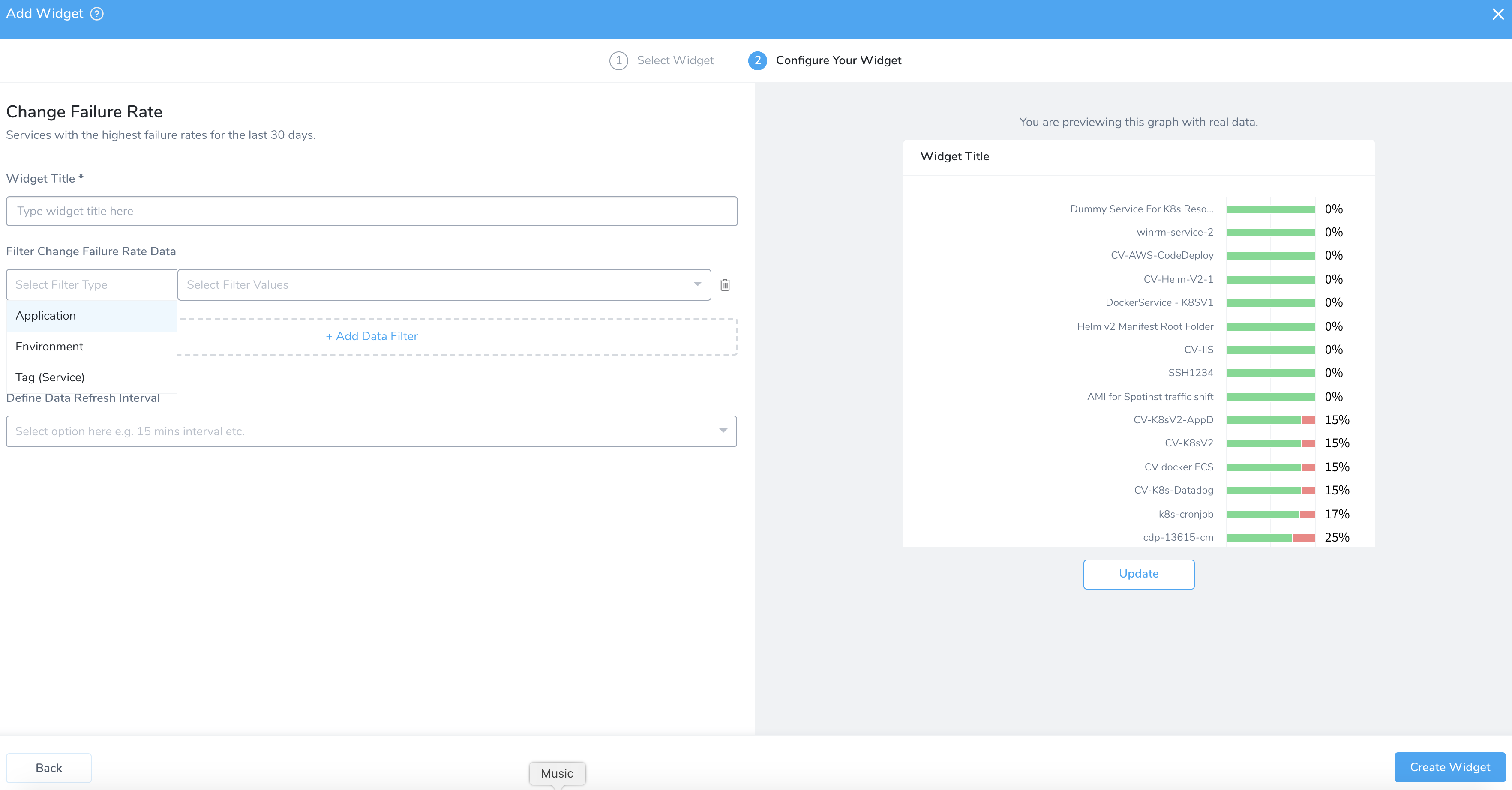
In Filter Change Failure Rate Data, click Add Data Filter. For more information on filters, see Filters, Groups, and Tags.
In Filter Type, select Application, Environment, or Tag (Service).You can add up to three data filters.
In Select Filter Values, select value for your filter type from the drop-down list.
In Define Data Refresh Interval, select the interval. The default value of Define Data Refresh Interval is Never.
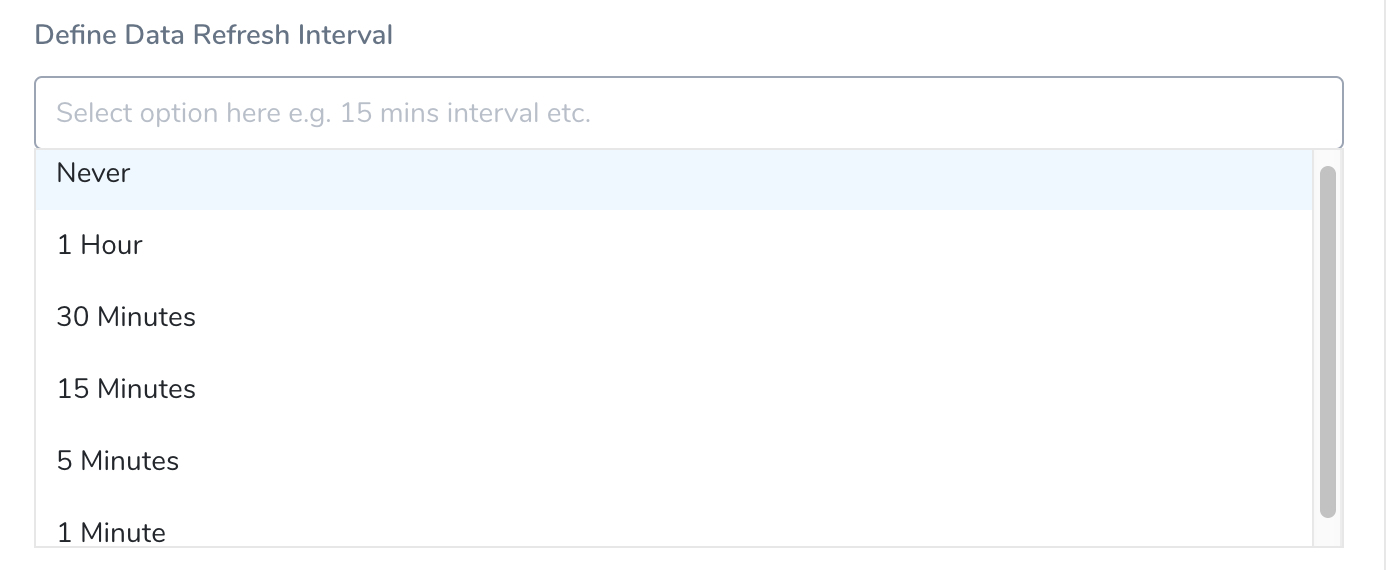
Once you have configured the Widget, click Create Widget.
Option 3: Configure Deployment History
The widgets with the Time Filter option can now show data for up to a year.
Currently, this feature is behind a Feature Flag. Contact Harness Support to enable the feature. Feature Flags can only be removed for Harness Professional and Essentials editions. Once the feature is released to a general audience, it is available for Trial and Community Editions.
For this Widget, deployments are the only entity available for measurement, and time intervals are the only available filters. Deployment History displays data only for the terminal state, for example, failed, success, etc. The running executions are not filtered because the deployments that have ended in the selected time series are only fetched.
In Configure Your Widget, in Widget Title, enter a title for your widget.
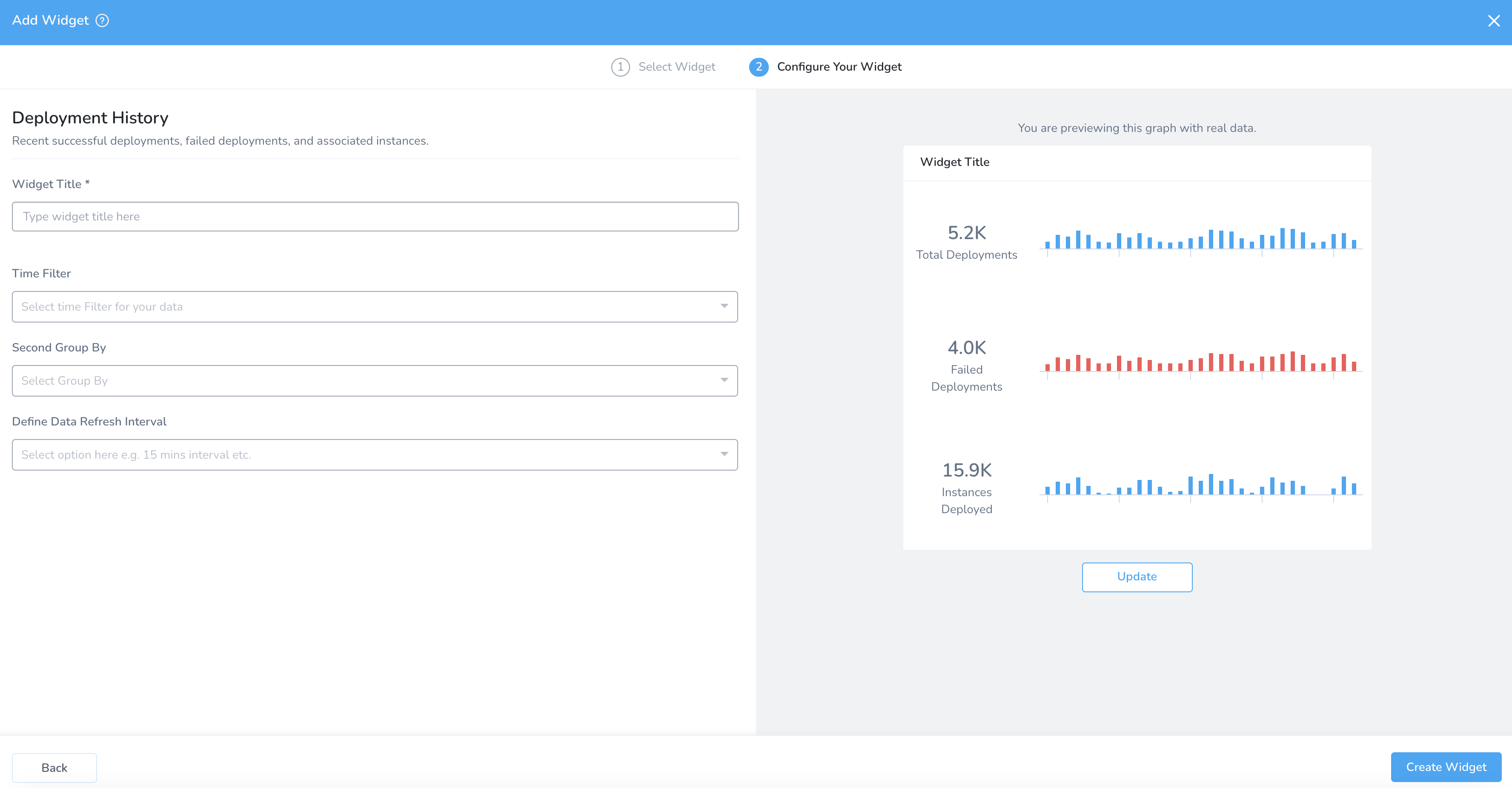
Select the Time Filter. You can select any of the following:
Show Last 1 Hour Data
Show Last 24 Hours Data
Show Last 7 Days Data
Show Last 30 Days Data
Show Last 6 Months Data
Show Last 1 Year Data

In Second Group By, select the second level for the time filter. The Second Group By option is listed based on your Time Filter selection.
For example, if you have selected Show Last 1 Year Data in Time Filter, then the Second Group By lists only monthly. If you select Show Last 7 Days Data in Time Filter, then it lists daily and hourly.
In Define Data Refresh Interval, select the interval. The default value of Define Data Refresh Interval is Never.
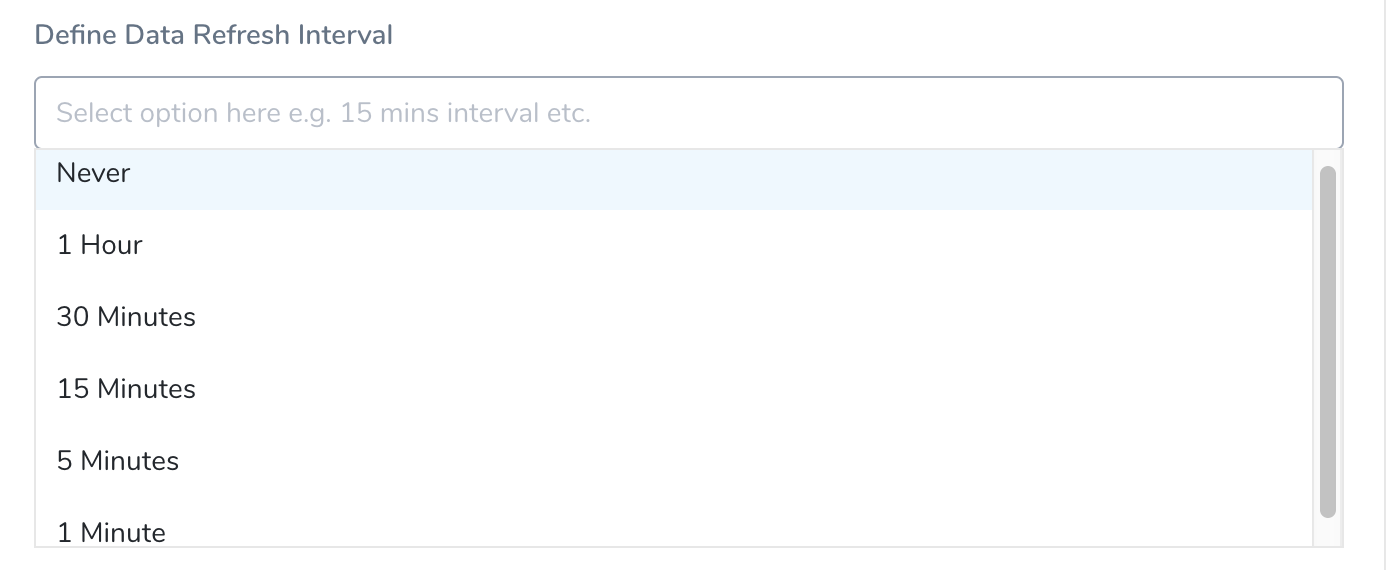
Once you have configured the Widget, click Create Widget.
Option 4: Configure Lead Time to Production
For this Widget, deployments are the only entity available for measurement. You can filter on multiple Harness entities and Tags.
In Configure Your Widget, in Widget Title, enter a title for your widget.

In Time Filter, select the time filter. You can select any of the following:
Show Last 1 Hour Data
Show Last 24 Hours Data
Show Last 7 Days Data
Show Last 30 Days Data
Show Last 6 Months Data
Show Last 1 Year Data

In Filter Lead Time to Production Data, click Add Data Filter. For more information on filters, see Filters, Groups, and Tags.
In Select Filter Type, select the filter. You can select Application, Service, Environment, Cloud Providers, Status, Tag (Application), Tag (Service), Tag (Environment), or Tag (Deployment). Filter values are listed based on your Filter type selection.
You can add up to nine data filters.
Tags
Ensure you are familiar with Harness Tags and using variables expressions in Tag names and values. See Use Expressions in Workflow and Pipeline Tags.
This can be a very powerful method for creating Custom Dashboards. For example, let's say you had a Workflow or Pipeline Tag named commitID. The value for it is passed in as an expression, such as ${workflow.variables.commitID}. You could provide the value for the variable using a Trigger that passes in a Git commit ID.
When you deploy, the expression is evaluated and the commit ID is displayed in Deployments like commitID:521747298a3790fde1710f3aa2d03b55020575aa.
Now, you can create a Custom Dashboard for the name commitID that filters or groups deployments by each commit ID.
- You can create a Harness Custom Dashboard that filters or groups using Tags that use expressions.
- You can use a Tag whose name or value uses an expression, but you can only filter or group by Tag name.
- You cannot use the expression itself to filter or group. You must use the evaluated expression displayed in Harness Deployments.
- You can use expression Tags in the following Widgets:
- Deployments
- Lead Time to Production
- Mean Time to Restore
Status
For Status the following terminal statuses are available:
Rejected: Filters the rejected deployments.
Expired: Filters the expired deployments.
Error: Filters the deployments with errors. This status filters the deployments with unforeseen circumstances, for example, delegate not available, corrupted data, etc.
Failed: Filters the failed deployments. The deployments could fail because of health check or configuration issues.
Success: Filters the successful deployments.
Aborted: Filters the aborted deployments.
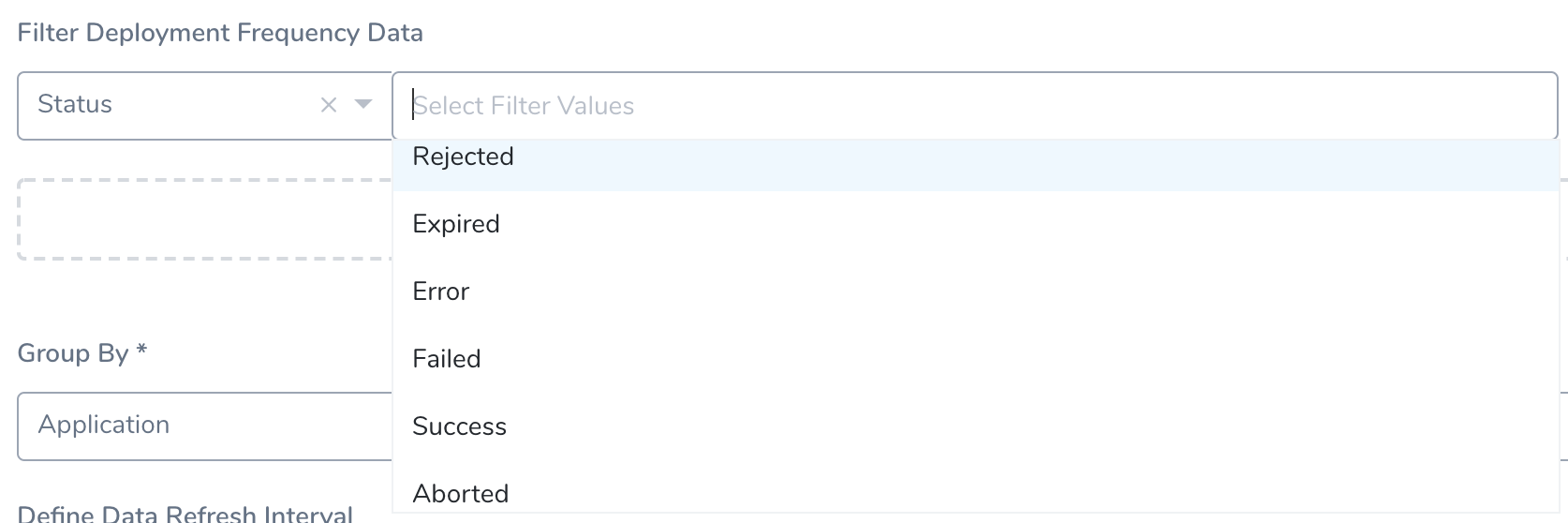
In Group By select, Group by Entity or Group by Tag.
Group by Entity: Select Application or Service.

Group by Tag: Select Tag (in Application), Tag (in Service), or Tag (in Deployment).

Select the Tag Name.

In Define Data Refresh Interval, select the interval. The default value of Define Data Refresh Interval is Never.
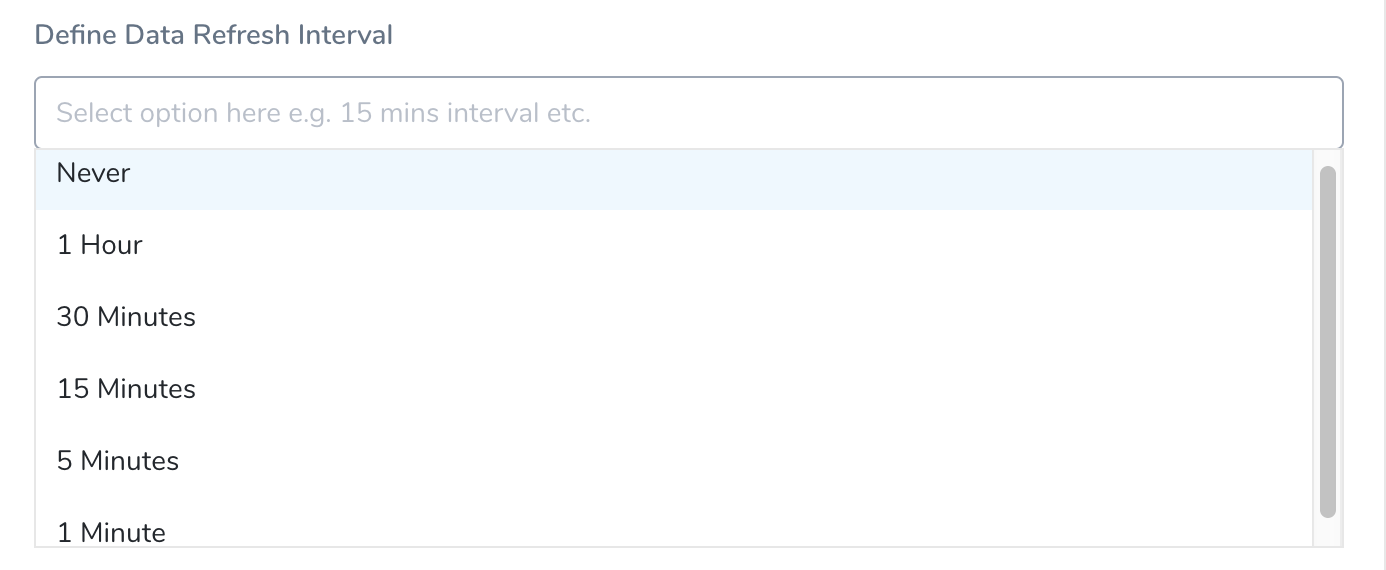
Once you have configured the Widget, click Create Widget.
Option 5: Configure Deployment Frequency
This line chart shows the daily frequency of deployments by Application, Service, or Tag. You can customize the Time Filter (range) and can filter on multiple Harness entities and Tags.
The steps to configure Deployment Frequency is almost identical to Lead Time to Production.
Option 6: Configure Mean Time to Restore
This line chart shows the average rollback duration by Application, Service, or Tag. You can customize the Time Filter (range), and can filter on multiple Harness entities and Tags.
The steps to configure Mean Time to Restore is almost identical to Lead Time to Production.
View/Edit Primary Widgets
Account Administrators can edit the existing Widgets.
Click Widget's More Options ••• .

Select View/**Edit**. This reopens controls for Add Primary Widgets. You can follow the Add Primary Widgets steps to edit the configurations.
Once you have configured the Widget, click Update Widget.
Remove Primary Widgets
Account Administrators can Remove the existing Widgets. Remove deletes the Widget from this Custom Dashboard.
If you've customized the Widget's configuration, this also removes that configuration from your Harness account. This action cannot be undone. Consider first cloning a backup copy of the current dashboard.
In Widget, click More Options •••.

Select Remove.
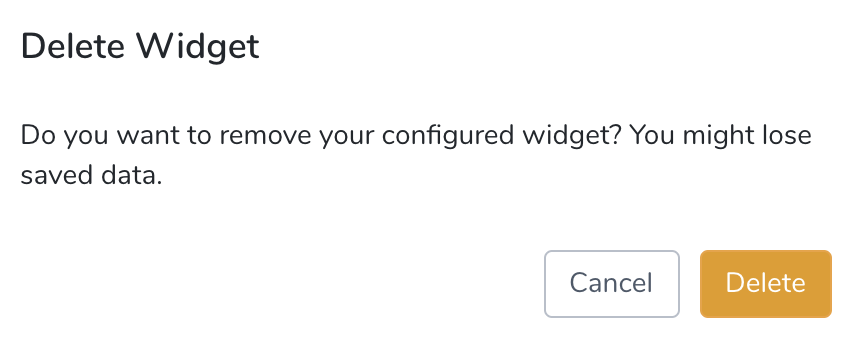
Click Delete to remove the Widget.